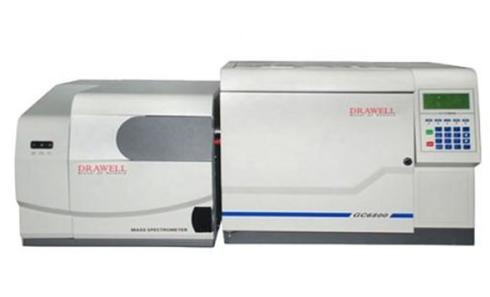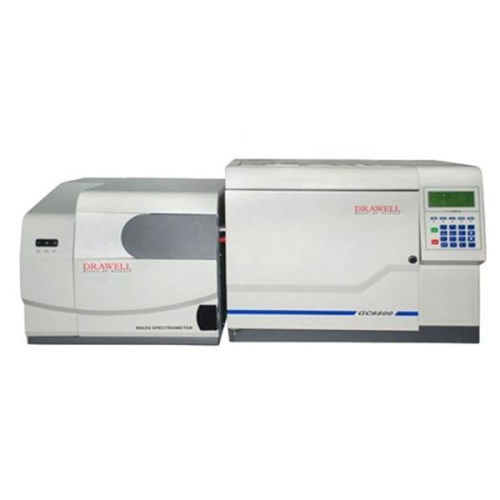Gas chromatography-mass spectrometry (GC-MS) provides unparalleled insights into complex sample compositions. Among the key trends driving innovation in this field is the continuous development of high-resolution GC-MS systems. In this article, we explore the recent advancements in high-resolution GC-MS, shedding light on how these innovations are revolutionizing analytical capabilities.

The Essence of High-Resolution GC-MS
1. Instrumentation Components
| Component | Functionality |
| Gas Chromatograph (GC): | Separates complex mixtures into individual compounds. |
| Mass Spectrometer (MS): | Identifies and quantifies compounds based on mass-to-charge ratios. |
| High-Resolution (HR) Capability: | Increased resolution for precise separation and identification. |
2. Key Features
| Feature | Description |
| Enhanced Separation: | Higher resolution allows for better separation of closely eluting compounds. |
| Mass Accuracy: | Improved mass accuracy for precise compound identification. |
| Isomer Differentiation: | Capability to distinguish between isomers with similar mass spectra. |
| Dynamic Range: | Expanded dynamic range for detecting compounds at various concentration levels. |
3. Advantages in Analysis
| Advantage | Significance |
| Improved Sensitivity: | Detects trace levels of compounds, enhancing sensitivity. |
| Accurate Mass Measurement: | Provides accurate mass measurements for confident compound identification. |
| Comprehensive Analysis: | Enables detailed analysis of complex samples in various applications. |

Recent Advancements in High-Resolution GC-MS
1. Enhanced Chromatographic Separation
Recent advances in high-resolution GC-MS are strongly related to advances in chromatographic separation. Column technology advancements, such as the invention of capillary columns with novel stationary phases, have dramatically improved compound resolution. This enables the separation of complex mixtures with greater precision and sensitivity.
2. Time-of-Flight Mass Spectrometry (TOF-MS) in High-Resolution GC
The incorporation of time-of-flight mass spectrometry (TOF-MS) into GC systems has been a significant step forward. TOF-MS has a high mass resolution, which allows for the exact determination of molecular weights. This method allows for the detection of a greater variety of substances as well as the differentiation of isomers and closely related molecules.
3. Accurate Mass and Elemental Composition Determination
High-resolution GC-MS allows for more accurate mass determination, allowing researchers to identify chemicals with greater certainty. Accurate mass measurements improve the precision of molecular formula determination, assisting in the identification of unknown compounds and lowering the likelihood of false positives.
4. Improved Sensitivity and Dynamic Range
Technological advances in detection technologies such as electron ionization (EI) and chemical ionization (CI) have contributed to higher sensitivity in high-resolution GC-MS. This heightened sensitivity expands the dynamic range of the system, allowing for the detection of trace levels of compounds in complex matrices.
6. Comprehensive Metabolomics and Untargeted Analysis
The high resolution offered by modern GC-MS systems is particularly valuable in metabolomics and untargeted analysis. Researchers can now explore comprehensive metabolic profiles, identify biomarkers, and uncover subtle changes in complex biological samples with a level of detail that was previously challenging to achieve.
7. Reduction of Matrix Interference
High-resolution GC-MS excels in reducing matrix interference, especially in complex samples such as biological fluids or environmental extracts. The improved selectivity and resolution allow for the identification and quantification of compounds even in the presence of interfering matrix components.
8. Software Advances for Data Processing
The power of high-resolution GC-MS is amplified further by sophisticated data processing tools. Peak deconvolution, chemical identification, and the extraction of useful information from complex datasets are all aided by advanced algorithms and chemometric techniques.
9. Applications Across Diverse Industries
| Industry/Application | Use Cases |
| 1. Environmental Analysis: | Identification and quantification of pollutants, pesticides, and volatile organic compounds (VOCs) in air, water, and soil samples.Monitoring environmental contaminants for regulatory compliance. |
| 2. Pharmaceutical Research: | Drug discovery and development, including analysis of pharmaceutical formulations and metabolites.Detection of impurities and degradation products in pharmaceutical products. |
| 3. Food and Beverage Industry: | Quality control and authenticity testing of food products.Detection of contaminants, pesticides, and flavor compounds in food and beverages. |
| 4. Forensic Science: | Analysis of forensic samples, including drugs, toxicology, and arson investigations.Identification of trace evidence in criminal investigations. |
| 5. Petrochemical Industry: | Characterization of petroleum products and analysis of hydrocarbons in crude oil. Monitoring and identifying pollutants in air and water from petrochemical processes. |
| 6. Environmental Forensics: | Tracing the origin and fate of environmental contaminants.Source identification in pollution incidents and environmental forensics. |
| 7. Metabolomics and Proteomics: | Profiling and identification of metabolites and proteins in biological samples.Advancing research in metabolomics and proteomics for disease biomarker discovery. |
| 8. Flavor and Fragrance Industry: | Analysis of volatile compounds in flavors and fragrances.Quality control and formulation in the production of perfumes and food flavors. |
10. Future Directions and Integration with Other Techniques
Exciting opportunities await high-resolution GC-MS in the future, including improved integration with other analytical techniques. Synergies with techniques like liquid chromatography-mass spectrometry (LC-MS) and nuclear magnetic resonance (NMR) promise an in-depth understanding of complicated material.
Conclusion
Advancements in high-resolution gas chromatography-mass spectrometry have ushered in a new era of analytical capabilities. The developing landscape of GC-MS is shaping how researchers untangle the intricacies of chemical mixtures, from improved chromatographic separations to precise mass estimations. As technology continues to advance, the applications and impact of high-resolution GC-MS are expected to broaden, providing researchers with unprecedented tools for in-depth analysis across various scientific disciplines.


